Unless a diehard history fan, the average visitor to Asia may not realize the impact that World War 2 and the Japanese Military Forces had on the region. Memories from that not-so-long-ago war are present nearly everywhere. The resilient people of Asia survived horrors which are often not repeated to younger generations of family members, unless prodded. Ask any Asian under age 50 about their grandparents and the war and very little if anything might be shared. Ask any Asian over age 80 and many have a story. World War 2 Asia will always be remembered. Asians are not forgive and forget people. Forgive maybe. Forget never. Memorials, museums, and national cemeteries can be found in some of the most remote locations in Asia, as an atonement to tragic times they survived and to honor those who did not survive.
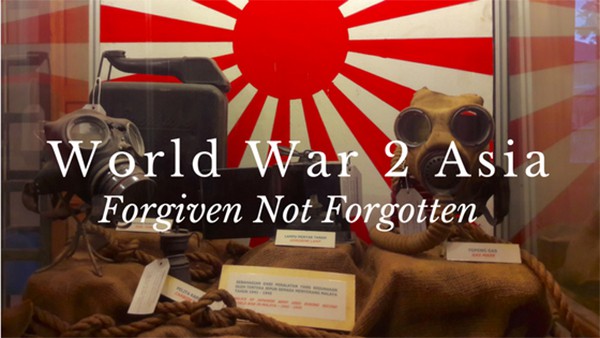
A Brief History
Long before the German Nazi party has solidified their position in Germany the Japanese had embarked on an ambitious plan of world dominance. This began with the forceful occupation of Manchuria in 1931 and placing a puppet Chinese Prince in charge of the province. By keeping the Chinese divided with no central government it was the Japanese intention to control China with relatively little violence.
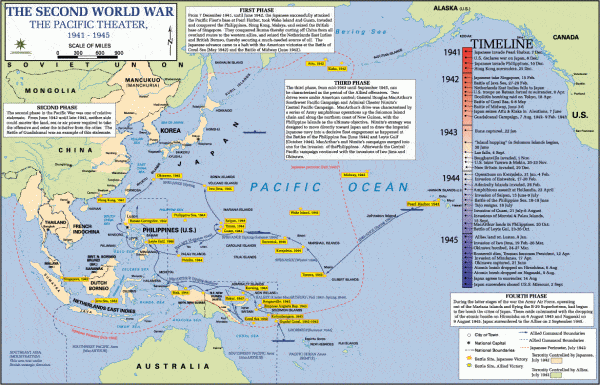
However, due to the nationalist movement gaining momentum in China, the Japanese used an incident on 7 July 1937 to start the Second Sino Japanese War. The Japanese military was attacked by Chinese Troops in what historically became known as the Marco Polo Bridge Incident. The attack came because the Japanese military didn’t tell China ahead of time that they would be carrying out military training in the area. Training which included Japanese troops shooting gunpowder rounds at the bridge that led to Beijing. The Japanese Empire used the incident to validate the launch of a full-scale war against China.
The war in the Pacific began on 7 December 1941 when warplanes from Japan launched a surprise attack on the U.S. Navy base at Pearl Harbor, Hawaii. Within hours of the attack on Pearl Harbor, Japan began a massive campaign of expansion throughout the Southeast Asia–Pacific region.
Jump to:
- China
- Korea
- Hong Kong
- French Indochina (Vietnam, Laos, Cambodia)
- Philippines
- Thailand
- Malaysia (Malaya)
- Singapore
- Indonesia (British/Dutch Borneo/Dutch West Indies)
- Myanmar (Burma)
- India
- Hiroshima
China
The Empire of Japan had won Korea as the spoils of war with China in the early 20th century. Their continued presence in Korea and northern China resulted in the occupation of rail and sea routes along the east coast of China to ensure that resources from Manchuria were readily transported to, and controlled by, Japan. The Second Sino-Japanese War that started in 1937 was basically an escalation and expansion of the occupation.
Japan had no desire to occupy and conquer all of China, but as resistance grew so did the Japanese campaign to keep China in a subservient position. Imperial Japan’s self-proclaimed vision during this period was that as the leader of all Asiatic cultures, and encouraged the Asian nations in the quest to cast off the yoke of European colonial rule throughout Asia.
By 1938 the Japanese Imperial Army, ignoring orders from Tokyo, continued expansion southward that resulted in the de-facto Chinese Army becoming guerilla fighters. To prevent the advance of the superior Japanese forces the guerilla army went so far as to sabotage dams along the Yellow River that resulted in the drowning of more than 1 million Chinese civilians. The Japanese continued to become more brutal and savage which culminated in the siege of Nanking, which is also noted as the Nanking Massacre.
During this period the Chinese National Government had appealed to, the then League of Nations, to send aid and arms to the beleaguered nation. The famous Burma Road was used to transport goods into China and the famous Flying Tigers, an independent aviator group funded by the USA, provided airlift of goods and materials from Burma.
In late 1940 the Japanese joined the axis powers of Germany and Italy to establish an alliance of world dominance both in Asia and Europe. Due to an embargo of resources, from the USA and its allies, Japan attacked Pearl Harbor on 7 December 1941 and started World War 2 in the Pacific. Their strategy embraced immediate expansion of control throughout Southeast Asia and the Pacific in coordination with the attack on Pearl Harbor.
MUST VISIT:
September 18th Memorial Museum
Shenyang, China
By: Bert Luxing of Survive Travel
11 Free Things to do in Shenyang Liaoning China
The September 18 Memorial Museum was easily the most memorable thing I did whilst in Shenyang. Actually, I had never heard of the September 18 event (also known as the Manchurian Incident) before going to Shenyang, but thought the museum would be worth a look, especially since it was free. In 1931 the Japanese decided to invade China and they justified it by (allegedly) bombing one of their own railroads and then blaming it on Chinese rebels.
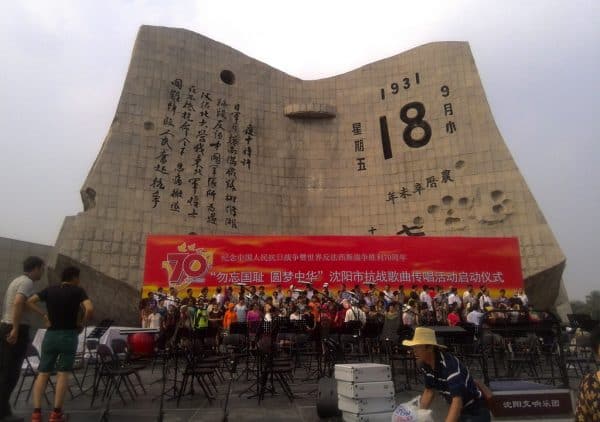
In “retaliation” they launched a full scale attack on China, starting with Shenyang. While I have no doubt that it was a brutal invasion, one of the things that stuck with me about the museum was how one-sided the information was. Never the less, there was a wealth of information about incident in Chinese and English. If you are ever in Shenyang I highly recommend checking this museum out.
September 18th Memorial Museum
46 Wanghua S St, Dadong Qu, Shenyang Shi, Liaoning Sheng
Opening: Tues-Sun, 9:00am-4:30pm
Entry: Free
Korea
The escalating war with China and the bombing of Pearl Harbor, took its toll on the Koreans, who had been colonial subjects of Japan for 35 years. With the war effort, more troops were introduced onto the peninsula and brutality increased as the Japanese forced Koreans to work in factories and to serve as soldiers. In addition, with the mobilization of more and more troops, tens of thousands of Korean women were forced into service as ‘comfort women’, or sexual slaves, for Japanese soldiers. Any dissent was dealt with swiftly and brutally, creating an atmosphere of oppression and uncertainty throughout Korea.
MUST VISIT:
Changgyeong Palace
Seoul, South Korea
By: Richa of My Ticklefeet
My Ticklefeet Travel Blogs
Changgyeong Palace is one of the five royal palaces in Seoul, S. Korea built by King Sejong of the Joseon Dynasty. This palace was home for the ladies of royal family as well as concubines of the king. However during the Japanese invasion of Korea Changgyeong palace was reduced from its palatial stature to a public park. Changgyeong Palace was converted by Japanese rulers into a zoo and a botanical garden. It was not until when Korea got its independence that the palace was brought back to its palatial stature and was closed to public except for visiting hours. It is located very close to the two most famous palaces in the heart of Seoul namely Changdeokgung and Gyeongbokgung palaces.
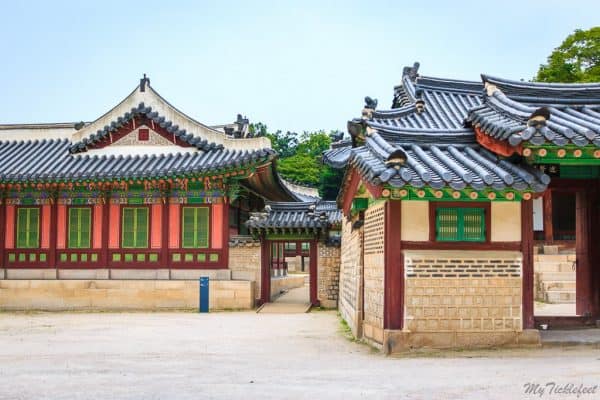
Changgyeong Palace: Seoul, South Korea
Opening: Tues-Sun, 09:00-18:00
Entry: Adult: 1000 won; children under age 6: free
*If you are wearing a Hanbok (traditional Korean dress) then it’s free to enter any palace in Seoul.
Hong Kong
The British knew that Hong Kong had very little strategic importance to the Japanese. Even so, the small garrison at Hong Kong was reinforced with two Canadian infantry divisions in November 1941 bringing the total number of defenders to 15,000 men. With British intelligence reports putting the number of nearby Japanese forces at 20,000, the garrison felt confident in its security.
By the morning of 8 December 1941 the Japanese had, in actuality, amassed a force of 52,000 on the Kowloon border. The shear enormity of the invading forces forced the British into retreat to Hong Kong Island by the morning of 13 December. After intense bombing and the British refusing offers to surrender, the Japanese landed on Hong Kong Island. As they moved across the island of Hong Kong the Japanese committed atrocities of the worst kind; executing all the nuns and medical staff at the Salesian Mission after their surrender, the massacre of nurses, doctors and soldiers at the St Stephen’s College field hospital as well as extensive reports of the bondage and rape of British women across the island.
In the afternoon of 25 December 1941, later named “Black Christmas”, the Governor General of Hong Kong surrendered to the Japanese.
French Indochina (Vietnam, Laos, Cambodia)
The defeat of France by Nazi Germany in 1940 led to the installation of the, pro-German, Vichy French Government. Later in 1940, the Vichy Government ceded control of Hanoi and Saigon to the Japanese, by now a member of the axis alliance. The United States, concerned with by this expansion, put embargos on exports of steel and oil to Japan. This resulted in the Japanese decision to attack Pearl Harbor and rapidly expand their influence further into Asia and the Pacific.
Philippines
Just ten hours after the attack on Pearl Harbor the Japanese began aerial bombardment followed by troop landings in the Philippines. General Douglas McArthur, the US Asia-Pacific Commander, was forced to withdraw his naval forces after the loss of all the aircraft in his command. With no hope for reinforcements and resupply, the US ground forces retreated to the Bataan Peninsula and Corregidor Island. The US-Philippine forces surrendered in April of 1942 and were forced to march to a prison camp 104 km to the north. So many soldiers died from deprivation and brutality before arriving at the prison this became known as the ‘Bataan Death March’.
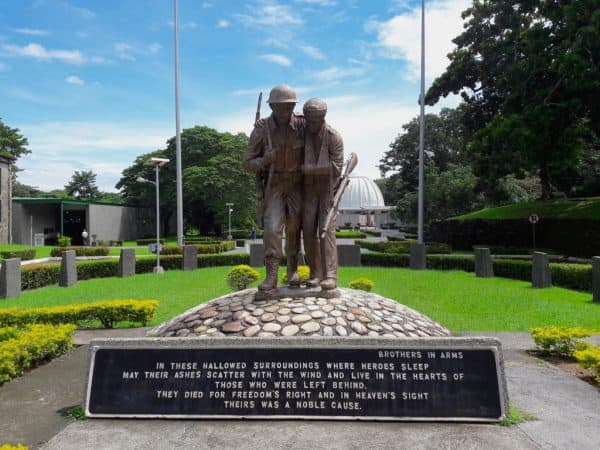
After the invasion and during the 3-year occupation of the Philippines the Japanese continued to expand their military influence throughout the Pacific. The Japanese occupation began to crumble upon the return of US General McArthur and his forces in late 1944.
MUST VISIT:
Corregidor Island
Manila Bay, Philippines
By: Maria Rona Beltran of MariaRonaBeltran.com
Travel With Maria
Corregidor Island used to be a battlefield where hundreds of thousands of people were killed during World War II, when Japan colonized the Philippines but later succumbed to USA. Nowadays, it is made of stunning ruins of barracks, buildings, hospitals and tunnels. It is a place that no one wouldn’t want to be left alone at night because of many eerie sounds and ghosts believed roaming the area. A lot of bombs are believed to be hidden or buried deep down somewhere until now.
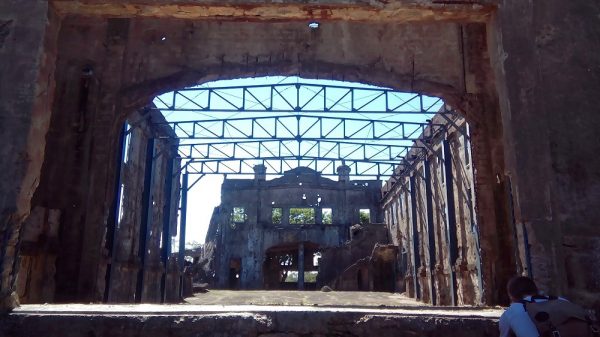
Guests are not allowed to explore the island on their own. It is also a military memorial to American, Filipino and Japanese soldiers who served or lost their lives on the island. Fully owned by the government, no one lives here anymore. Only employees who maintain the cleanliness of the surroundings are allowed to do that. Don’t forget to ask your tour guide where to find those clusters of old beds that belong to women doctors and nurses taking care of wounded soldiers. The room where these are located are locked every night to safeguard them from being raped. If you’re brave enough, you can book a room or a bunk bed for an overnight stay.
Corregidor Island: Manila Bay, Cavite
Opening: Mon-Sun (Except holidays), 06:00-22:00
Entry: Weekday Php 2,550 or USD 52Weekend Php 2,749 or USD 55
Thailand
During the period leading up to World War 2, and Japan’s war in China, the Thai Government had been approach to join the axis allies with Japan. Strategically this would give Japan access to the entire Asia crescent from Malaya to India. Even with the promise of more territory along both the China and Malaya border the King still played both sides and opened discussions with the USA and British. By December 1941 the Japanese could no longer wait for a decision from the King and invaded southern Thailand at Songkhla.The conflict lasted a mere 5 hours before an armistice was reached and Thailand sorted their ‘neutrality’ out with the Japanese.
MUST VISIT:
Thai-Burma Railway Centre
Kanchanaburi, Thailand
By: Shandos Cleaver of Travelnuity
Travelnuity
The Bridge on the River Kwai, part of the Thailand-Burma “Death” Railway, is located in Kanchanaburi, 130km west of Bangkok. The Japanese built the railway during WWII, using a mixture of forced Asian civilian labourers and Allied POWs. Later, this bridge was made infamous in the WWII movie of the same name (although the actual movie was filmed elsewhere).
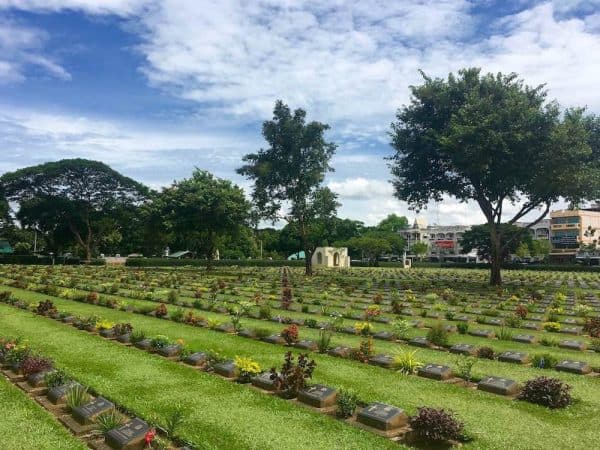
While the bridge itself naturally deserves a visit (and it is possible to continue further along the train line to the graphically named “Hellfire Pass”), the most moving part of my trip was visiting the Thai-Burma Railway Centre. Located about 1km away from the bridge, it was set-up and is run by Ron Beattie, an Australian expert in the railway. The museum is generally considered the best source of information regarding WWII in Thailand, in particular the horrendous conditions endured by the POWs and Asian labourers. The Kanchanaburi War Cemetery, located opposite the museum and the final resting place of almost 7000 Allied POW bodies, is an additional sobering reminder.
Thai-Burma Railway Centre
73 Jaokannun Rd, Kanchanaburi, Thailand
Opening: Daily 09:00-17:00
Entry: 140 Baht
MUST VISIT:
Hellfire Pass Memorial Museum
Kanchanaburi, Thailand
By: Marie-Carmen of The Orient Excess
The Orient Excess
At school, in Europe, you learn very little of what happened in Asia. Sure as a French citizen we did learn a fair bit of the consequences of our actions in what used to be called Indo-China, but that was about it. It’s when we were in Thailand, in Kanchanaburi, that it did hit us. Our visit was mainly, like many, to see the bridge over the river Kwai, but the central monument of the city spelling out “WAR” got us to dig a little deeper. We ended up at the Hellfire pass. Chilling walls of dirt, heat and history. If you wonder how that name came to be, imagine the light of the torches of the prisoners digging the infamous death railway at night, the imagery is pretty self explanatory.
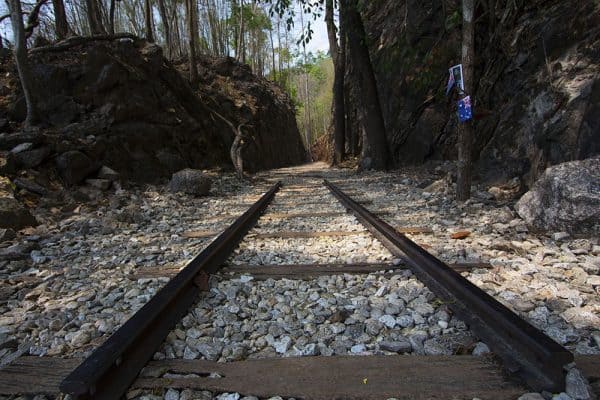
The museum you enter before getting there tells you the whole story: Allied prisoners (Dutch, Australian and British) as well as local workers (Thai and Malaysian) were made to dig for 18 hours a day at the Hellfire pass to get the passage clear for the “Death Railway”, many were beaten to death, starved or died from the awful conditions they were living in.
Nowadays the Hellfire Pass can be visited. The local government has worked hard to keep people informed of the awful consequences of the Second World War in their country, and it is worth visiting if in the area to get a better understanding of what South-East Asia went through during those years.
Hellfire Pass Memorial Museum, Kanchanaburi, Thailand
Opening: Daily, 09:00-16:00
Admission: Free, (Donations accepted)
MUST VISIT:
Songkhla National Museum
Songkhla Town, Thailand
By: Vanessa Workman of The Island Drum
Discover the Charming City of Songkhla
The Songkhla National Museum is housed in what was originally the residence of the wealthy Na Songkhla Family who ruled the city in the 18th and 19th century. Built in 1878, in a traditional Chinese style of the time, the building went on to serve as administration offices and later city hall before being dedicated as The Songkhla National Museum in 1953.
The museum offers an insight into local archeology, history, culture and folk art of the region. It also continues to house the remarkable collection of artifacts acquired from the original Na Songkhla Ruling family. In addition, there is a small section that highlights the Japanese invasion of Songkhla during World War 2.
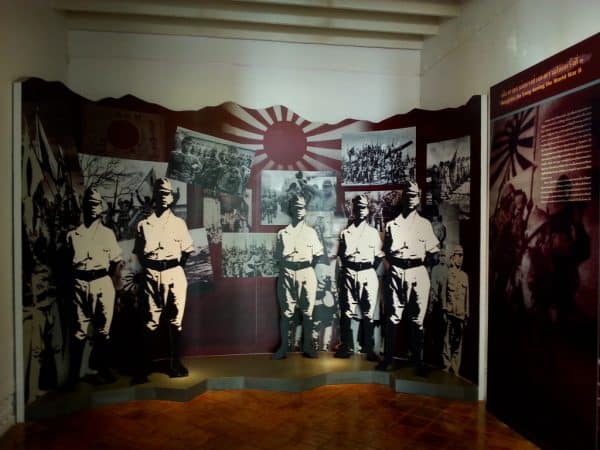
Songkhla National Museum
Wichian Chom Rd, Songkhla, Thailand
Opening: Wed-Sun, 09:00- 16:00
Entry: 100 Baht
Malaysia (Malaya)
The Japanese invaded Malaya (now Peninsula Malaysia) just after midnight on 8 December 1941. The amphibious assault and ensuing occupation started at Padang Pak Ama Beach in Kota Bharu, Kelantan. The Kota Bharu airport was in Japanese hands by the following day. The Malayan Campaign was coordinated in conjunction with landings in Songkhla and Pattani in Thailand. These troops divided into two separate forces; moving down the east coast towards Kuantan and down the west coast towards the Perak River. Their ultimate goal; to capture Singapore.
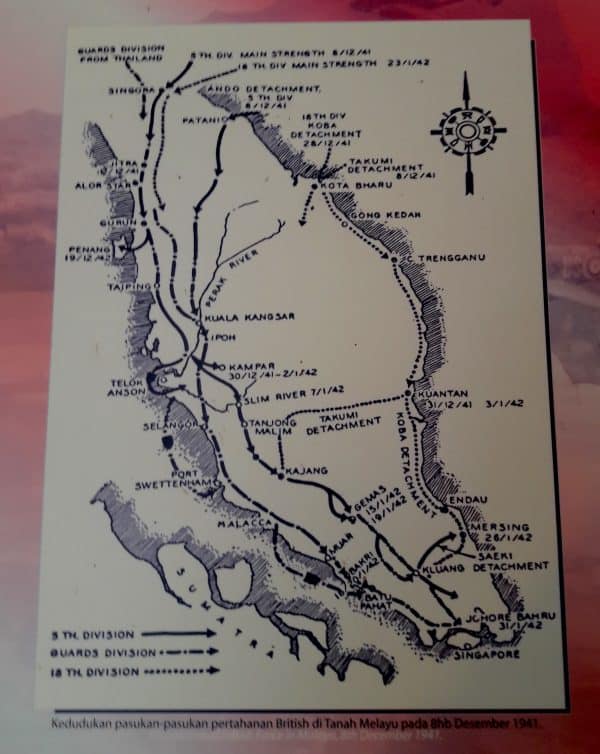
By engaging bicycle infantries, the Japanese military moved swiftly across the peninsula and by 11 December they began bombing Penang, Jitra and Alor Setar, occupying Penang on 19 December 1941. Continuing south, Japanese troops captured Ipoh on 26 December and Kuala Lumpur on 13 January 1942.
For the British, Indian, Australian and Malayan forces defending the Malaya colony, their defense efforts were for all for naught. By mid-January, 1942, General Percival, commander of the British Commonwealth forces, ordered the remaining 30,000 Allied troops in Malaya to retreat to Singapore. By the end of January 1942, the whole of Malaya was occupied by the Imperial Japanese Military, with Allied losses totaling over 138,000 including 130,000 captured. This began the shameful end of Britain as a colonial power in Southeast Asia.
MUST VISIT:
Bank Kerapu War Museum
Kota Bharu, Kelantan
By: Vanessa Workman of The Island Drum
Kota Bharu’s Bank Kerapu War Museum
As with the numerous museums in Kota Bharu, the Bank Kerapu War Museum building had a previous incarnation. Originally built by Mercantile Bank of India in 1912, it is the oldest stone building in the state of Kelantan. In 1941, the Japanese landed an amphibious force near Kota Bharu and quickly occupied the town. The Japanese military used the Bank Kerapu as headquarters for it secret police, where they interrogated as well as tortured prisoners. After the fall of Japan, the Bank Kerapu reopened and functioned, once again, as a bank until 1981. In 1994 it was officially opened as a war museum and memorial housing more than 1,000 exhibits relating to the Japanese occupation of Malaya. Can read more about this museum HERE
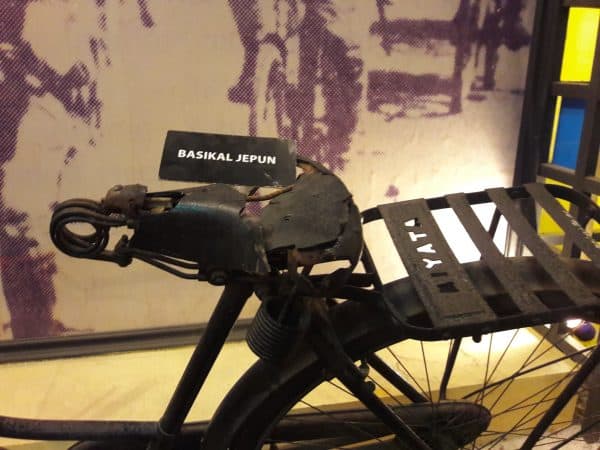
Bank Kerapu War Museum
Jalan Hospital, Kota Bharu, Kelantan
Opening: Sat-Thurs, 08:30-16:45
Entry: 1 Ringgit
Singapore
The British command in Singapore expected that any major invasion of Malaya would be from the sea near Singapore. It was the consensus that the difficult terrain and a lack of infrastructure on the mainland would slow any invasion force attempting to move down the peninsula. An interesting, lesser known fact is that over the years prior to the war, Japanese businessman had been investing in bicycle and bicycle component factories in Malaya. The invasion forces commandeered every bicycle available in northern Malaya, which in turn propelled the Japanese troops at a far greater speed than anticipated effectively undermining any British strategy to stop them.
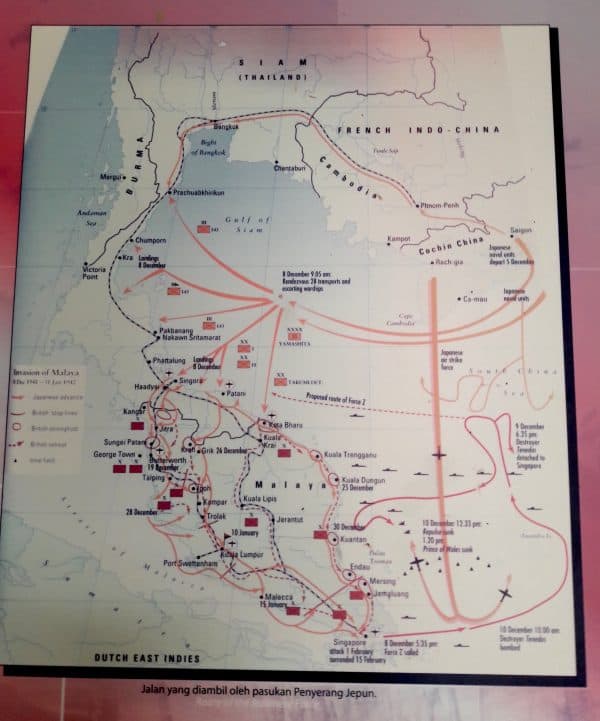
The Japanese began aerial attacks on Singapore whilst the invasion to the north commenced. As the British lost ground on the peninsula both British and Malay force slowly retreated to Singapore, until the allied forces blew up the Johor Causeway on January 31, 1942. After continued resistance, Singapore finally surrendered on February 15, 1942 and became an occupied city until the end of the war.
MUST VISIT:
The Battle Box
Singapore
By: Marianne Rogerson of Mum on the Move
50 Things to Do in Singapore with Kids
Hidden away nine metres below ground in the centre of Fort Canning Park, The Battle Box was the underground bomb-proof bunker of Britain’s HQ Malaya Command during World War II. It comprised 26 rooms, two entrances and a cat-ladder escape hatch, as well as an air filtration system to de-gas air in case of attack. The site is of particular historical significance as the place where General Percival reached the fateful decision to surrender Singapore to the Japanese on 15th February, 1942. This decision marked the beginning of the darkest chapter in Singapore’s history, and the start of the end of the British empire.
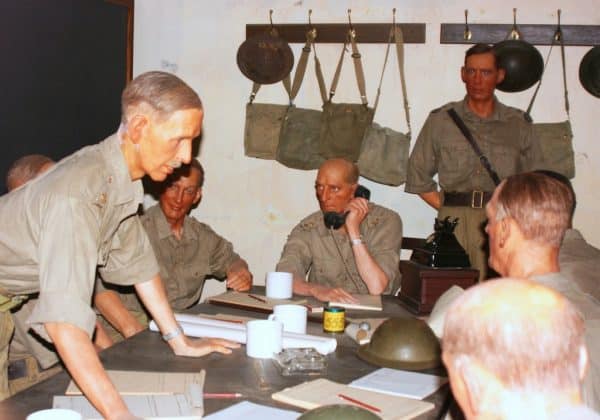
Today the Battle Box is a war museum focusing on that one fateful day in history. Scenes are recreated with waxwork models to allow visitors to relive the last few hours within the underground command centre prior to the British surrender. Air raid sirens and the sounds of close-by bombing help convey the fear and claustrophobia experienced by the occupants, and conversations between the commanders instils the sense of desperation felt during these final hours. Visits to the Battle Box are by guided tour only, lasting approximately 45 minutes.
The Battle Box: Inside Fort Canning Park
2 Cox Terrace, Singapore
Opening: Visits are by guided tour only at the following times:
Mon, 13:30, 14:45, 16:00, Tues-Sun, 09:45, 11:00, 13:30, 14:45, 16:00
Entry: Adult $18, Child $9
MUST VISIT:
The Changi Museum
Singapore
By: Vanessa Workman of The Island Drum
5 Reasons to Visit Singapore’s Changi Village
Relocated from its original location next to Changi Prison, The Changi Museum (and Chapel) which opened at its present location in 2001, spotlights the dark period of the Japanese occupation of Singapore between 1942 and 1945. Both civilians and prisoners of war were interned at the infamous Changi Prison during this period, including women and children. The museum offers a window into the war time experiences of the incarcerated through original photographs, drawings and letters on display. You can explore the site with a guided and/or audio tour. The museum also houses records of the more than 5,000 civilian prisoners who were interned at Changi during the occupation. Photography is not allowed inside the museum, however there are quite a few books and memorabilia for sale at the museum’s gift shop. Do allow yourself at least two hours for this museum, because you may well need an emotional break between exhibits.
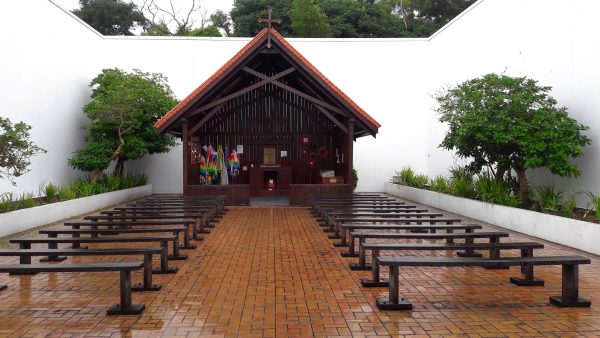
The Changi Museum
1000 Upper Changi Road, Singapore
Opening: Daily, 09:30-17:00
Entry: Free (Audio tour head set: Adult 8 Sing, Child 4 Sing)
Indonesia (British/Dutch Borneo, Dutch West Indies)
In 1942 the Japanese invasion of Borneo and the Dutch West Indies was launched, to gain access to oil reserves and control shipping lanes, as well as other resources required for the Imperial war machine. As in India as well other countries within the Asian crescent, many of the local population welcomed the Japanese as liberators from colonial rule. But their brutality and cruelty soon proved this to be a misnomer.
MUST VISIT:
Ambon War Cemetary
Ambon, Sulawesi
By: Gordon Arthur of Short Holidays and Getaways
Short Holidays and Getaways
The Ambon War Cemetery is also called the Australian Cemetery due to the many Australian soldiers who fought to defend this area during World War 2. The war memorial and cemetery is situated in the town of Ambon, in southern Sulawesi. The Japanese bombed Ambon heavily on January 1942, and it was later attacked by the Allied forces in 1943 and 1944. The cemetery contains the graves of the soldiers who died during the Japanese attack, and the many who passed away while in captivity in one of the many concentration camps, which the Japanese ruled over. There are 2,000 graves, and half of these are Australians. Australia was involved because Ambon was an important air and sea link between Australia, New Guinea, and the Netherlands East Indies and they attempted to hold back the Japanese attacks, with little success. The connection between Darwin, Australia and Ambon is still strong, with the annual Spice Islands Darwin Ambon Yacht Race.
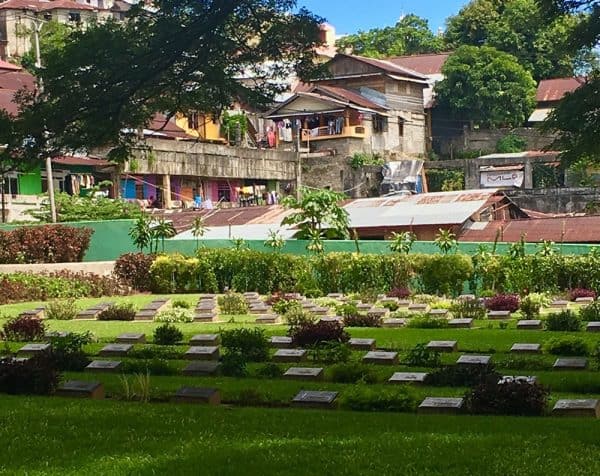
Ambon War Cemetery
Pandan Kasturi, Kota Ambon, Maluku
Opening: Daily (24 hours)
Entry: Free
Myanmar (Burma)
The key to the Japanese success in Burma was due to 2 critical factors; Japanese occupation of Thailand, allowed under the treaty of friendship, and the fact that the Japanese were battle harden troops compared to the relatively ‘green’ British recruits. The Japanese key objective in Burma was to cut off the ‘Burma Road’; the key supply line to the Chinese Nationalists. They achieved control over Burma in just 5 short months, from December of 1941 to May of 1942.
India
With the Japanese vision of being the leader of the Asiatic revolt against European colonial rule, the Japanese began behind the scenes political influence in India before the war. This included working with the Indian National Army, which had an off and on alliance with the Japanese military.
The Japanese invaded the Andaman and Nicobar Islands in March of 1942, quickly establishing control over the lightly defended islands. The islands were then placed under the command of the National Indian Army Leader Colonel Bucho. This did not restrain Japanese brutality towards the islanders and more than 10% of the population lost their lives during the occupation.
In March 1944 the Japanese Army pushed into North Eastern India from Burma hoping to restrict the flow of war materials in to China. The Japanese encountered stiff resistance at both Imphal and Kohima. After months of fighting the Japanese Army suffered its biggest defeat in Japanese Military History, and were forced to retreat in July 1944. The retreat marked the end of the Imperial Army’s push to secure Northeast India.
MUST VISIT:
Ross Island
Port Blair, India
By: Amrita of Tale of 2 Backpackers
Exploring The Ross Island-Andaman
It was during the mid twentieth century when India was ripe with the feeling of nationalism and was in the effort to free her from the British power, a small part of the country was under the exploitative control of a South-east Asian nation. The Andaman & Nicober Islands on the eastern coast of India was invaded by the Japanese forces in March 23, 1942. And within hours of landing on the island, it took complete control over the island. The Japanese invasion of Andaman was one of the most talked about incidents during the World War II. They had captured the Ross Island and had built their headquarters there. They went on to rampage, looting and killing whatever they could lay their hands on. As a result of Japanese atrocities, as many as 2000 Indians had lost their lives on the island. Finally the British recaptured the islands in 1945. Ross Island now has Japanese bunkers and other dilapidated buildings.
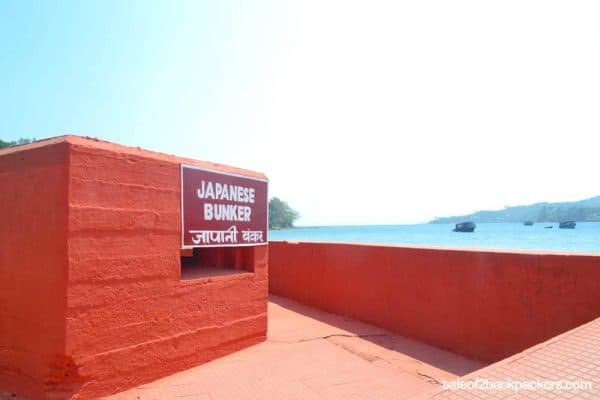
Ross Island: Port Blair, India
Opening: Thurs-Tues, 08:30-16:30 (Closed Wednesdays)
How to Reach: Ross Island is just a few kilometers from Port Blair. You can get to the island by taking a ferry from the Aberdeen Jetty of Port Blair. It takes about 20 minutes to reach there. Port Blair is connected by flight from all the major towns of India.
MUST VISIT:
Kohima War Cemetary
Nagaland, India
By: Suman Dooger of Nomadic Shoes
War Cemetery in Kohima Nagaland
At first look, the war cemetery looks like a perfectly manicured garden. It’s only when you see the graves with such heart-rending messages that you realise the sorrow the families of these young men buried here must have gone through. In the hope of preventing an attack on Burma, the Japanese troops struck the British army in Kohima, Nagaland and in Imphal, Mizoram to tear down the supply bases. In a hand-to-hand combat, the Commonwealth forces were able to secure their position and forced the Japanese to withdraw. This win was a major climacteric for the Allies of World War II and it was referred to as “Stalingrad of the East”.
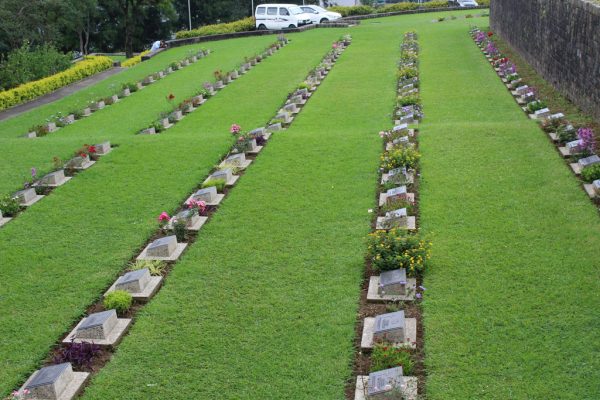
Designed by Colin St. Claire Oakes, Kohima War Cemetery is a memorial which lies on the battleground of Garrison Hill. Dedicated to soldiers of the 2nd British division of the Allied Forces who lost their lives at Kohima in the Second World War. The cemetery contains a total of 1420 Commonwealth burials in addition to 917 Indian soldiers – Hindus, Muslims and Sikhs who were cremated as per their faith.It’s heart-wrenching to think of these soldiers who are buried here, far away from their home country in a foreign land with nobody to visit them. All these lonely graves have are the roses to give them company.
Kohima War Cemetary: Nagaland, India
Opening: Mon-Sat, 09:00-16:00 (Closed Sundays)
Entry: Free
Hiroshima
The use of the atom bomb on Hiroshima and Nagasaki brought a swift end to the war with Japan. The massive destruction and loss of life caused by using nuclear weapons brought Japan to its knees. Faced with total destruction of both infrastructure and civilian population the Emperor was forced to capitulate and surrender. Hiroshima is still an important, yet grim, reminder of the potential of man to destroy, not only its enemies, but possibly oneself.
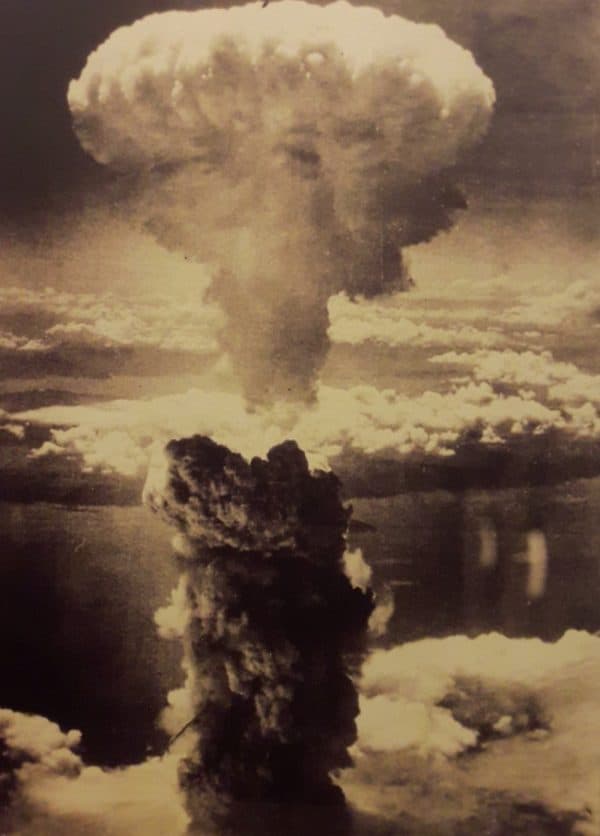
MUST VISIT:
Hiroshima Peace Park
Hiroshima, Japan
-Sally Lucas of Our 3 Kids v the World
Taking Kids to Hiroshima, Japan
Hiroshima was near the top of my list of places to visit in Japan, I learnt about Hiroshima in high school and the devastating effects of the nuclear bomb that was detonated 600m directly above the Hiroshima A-Bomb Dome on 6 August 1945. The area where the bomb was dropped has been designated as the Hiroshima Peace Memorial Park and by visiting you will walk away committed to ensuring that this planet should never see another detonation of a nuclear weapon. It is reported that up to 400,000 people were killed or died of complications from the radiation.
The Hiroshima Peace Park is free to visit, in 1996 it was classified an UNESCO World Heritage Site. There is a small fee charged to enter the Hiroshima Peace Memorial Museum, I highly recommend you go inside, there are a number of photos on display taken soon after the bomb detonated, where you will fully understand the devastation caused.
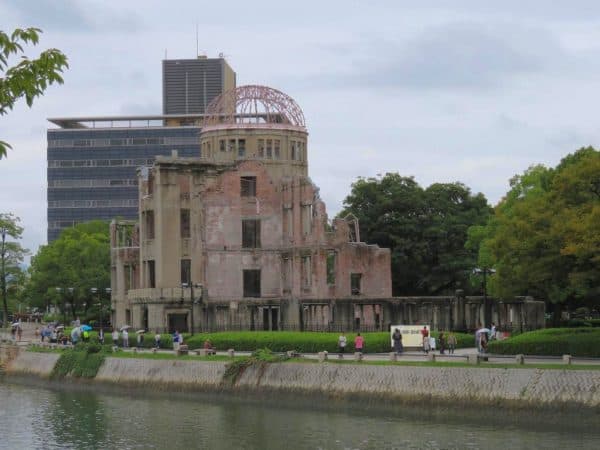
There is a Children Peace Memorial where you can write a letter of peace that you can add to the many others, the Peace Flame which will be burning until the last nuclear weapon on this earth is destroyed, I hope to go back one day and this flame is no longer lit. The Cenotaph for the A-Bomb Victims, lists all known people that lost their lives on that terrible day. Its a somber experience but one that I am thankful to have had.
I love what the Japanese have done with the site, it would be all to easy to fill it in and build over the top and pretend that it never happened. They are embracing this area and using it for everyone to learn. Learn the importance of never seeing a site like this again. I had a lady stop me while I was there, she thanked me for taking my child there, she said we all must learn from this.
Hiroshima Peace Park, Hiroshima, Japan
Opening: Daily (24 hours)
Entry: Free
World War 2 Asia Remembered
For visitors to Asia, exploring some of the historic World War 2 historic sites, museums and memorials will give insight to the past trials and tribulations of Asian countries. It is an opportunity to understand how this brief period in history so strongly influences the culture and heritage of Asia today; from post-colonial politics, to food, to regional demographics; World War 2 had a profound and lasting influence on the region. And it will not be forgotten.

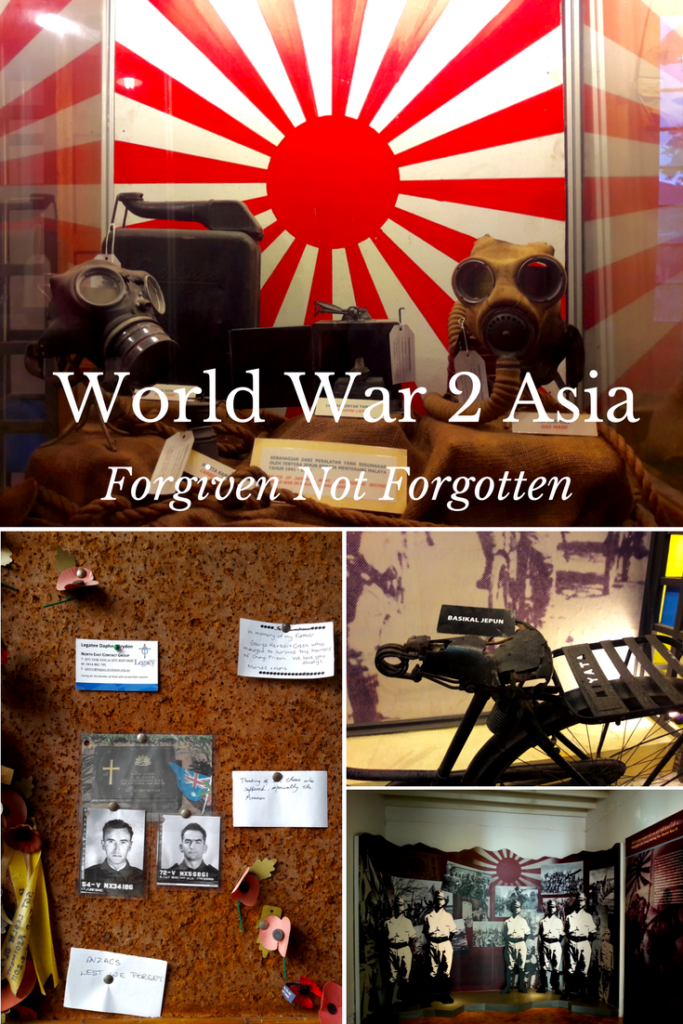
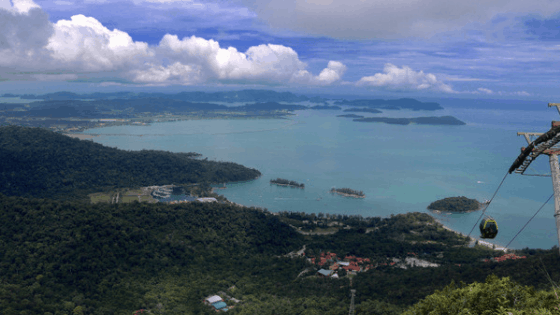
What a great round up of memorials. I didn’t know half of this stuff. I just hope we don’t see this kind of war again, but sadly history has a habit of repeating itself.
Thanks Anne! There are actually a lot more.. this post is just a sample. I also didn’t know any of this until I visited a few places and started researching. Researching for this blog has been a real eye opener.
This is a great article about the memorials in Asia. When I was in Hanoi, I had the opportunity to Hilton Memorial about for the Vietnam War. I would love to see the September 18 Memorial Museum in China. There is so much history and I love to hear about from a non-American perspective.
Hi Nathalie, yes I also visited that museum in Hanoi, but it’s the ones in Saigon that I found more informative (and an eye opener). Although I grew up during the Vietnam War, I was too young to understand or care. But for sure getting the ‘non-American’ version of wars can be insightful.
Wow this is like a really complete album of all the places with great importance in Asia regarding the World War. I think you did a great job and I will definitely check out some of these incredible places during my next visit.
Thanks Bella! There are many more museums and memorials that I considered adding (and may later) but for now I only highlighted the ones bloggers had visited, since I had only visited 3 or 4. It truly gives insight to present day Asian culture.
Hi Vanessa,
This is a fascinating and heart-wrenching recount of a topic so few folks know about around the Western World. We were taught little about the Japanese occupation in the USA. Just Pearl Harbor, really. But traveling through SE Asia quite a bit alerted us to many of these historic sites. You did a fabulous job detailing these spots and the history behind them. It was also interesting to see the King of Thailand’s position as the Japanese invaded; spending so much time in Thailand I knew little of their history with Japan. A very proud and free nation it is.
Ryan
Ryan, that’s also all I remember from school; Pearl Harbor. My grandmother was from Guam and her family’s home was taken over by the Japanese military, yet she, herself, was already living in the USA and that is one of the few things she didn’t speak much of. While researching for this blog, I was totally scratching my head how such a tiny country like Japan could have done so much. But watching that You Tube documentary, I was like.. oh wow. I want to visit those sites in Thailand next time I’m there. I think there are several more, but I only highlighted the ones bloggers had visited.
Wow! I really enjoyed this walk through history with the perspective of Asian countries. Many of these facts I did not know (like Singapore’s role). We too felt emotional seeing the Hellfire Pass – but you have given me inspiration to visit other memorial sites. I can imagine how Hiroshima could also impact anyone. Thanks for the history lesson!
Thanks Dorene, I’m inspired to visit more memorial sites now myself. I previously had no idea so many existed.
Japanese invasions are painful to read. While China has evolved itself and emerged a giant other countries have been slow to develop. Modern history is painful and full of gory incidents. We must learn lessons and never commit the same mistakes.
Interesting isn’t it? WW2 actually united China and made them even stronger. Amazing people.
I’m not really in to war history, but it’s hard not to know at least a little of it, especially because I live in Europe. WWI and WWII had deep impact on many places. But even though both were world wars, I never really think much about Asia for WWI and WWII sights. I had no idea any of these existed. And I’m surprised my husband didn’t go to Changgyeong Palace while he lived in Seoul over the past year. He’s definitely in to war history.
I’ve never been a history buff either Jennifer. And I only thought of Germany in connection with WW2. I was very surprised to realize I was living in a place that has a lot of WW2 stories and connections; Malaysia. Even more surprised to find out there are many folks still living who experienced it first hand. I just met a man in Singapore on Ubin Island, whose father was stabbed (by Japanese military) in front of him and his brothers and sisters. That horrible war really wasn’t that long ago..
Wow! As sad as it is, I rarely think of WWII monuments in relation to Asian countries. However, they were also hugely impacted by the devastation. Corregidor Island looks definitely looks like an eerie spot, but I like to visit these places as a way of showing respect for the victims. I would love to visit the Hiroshima museum someday and write a letter. What an incredible experience
Hopefully more visitors to Asia will come to know that WW2 did indeed lay its ugly hands on many peaceful Asian people.
Yes I agree. Many westerners even some Asians are not aware of the impact of WW2 in these parts. Yours is an interesting article and I loved reading through it :) Regarding Forgive and Forget … I think human psychology is such that we take forever to forget. Recently we were on a tour of Europe (#NiVaEuro) and every city of every country we went there was one or more memorial on WW2 , Nazi atrocities and the later communist rule.
Hey Nisha, yes it seems like such a long ago war, but I think most of us have at least one relative who lived through it and there are still plenty of ‘survivors’ in their 80s and 90s left. While researching for this blog I was truly shocked how one tiny country (Japan) could effect so many lives, I dare to delve into the European aspect of things.. massive heartbreak. :(
It’s interesting to hear about the war from an Asian perspective, because we often don’t delve into what prompted Asian involvement, and know about the individual politics between Asian countries. I feel quite ignorant to say that I had no idea about the animosity between China and Japan, or that Koreans were so enslaved by the Japanese regime.
And I wasn’t aware that Pearl Harbor was in response to an embargo. I really need to get myself to the musems you’ve listed, as I am fascinated by history, and understanding the different political relationships through time. My grandfather fought in Borneo, and my dad made a pilgrimage to visit him at the Ambon War Cemetery last year – I would love to get there myself one day. The Kokoda trail in PNG is another pilgrimage I would like to take, with WWII significance.
Thankyou for highlighting a part of WWII that we rarely hear about.
Thanks Megan. Initially I had thought this would be a blog about a few WW2 places to visit, but a couple of months later my mouth just kept dropping open farther and farther. I was dumbfounded how little I knew. Even I didn’t know the real reason behind the Pearl Harbor attack (which I think it quite sad considering I’m an American who also lost a relative there). You should go to Ambon if you get a chance, I was fortunate to have a stop there included on a media trip and it’s very moving.
Ppl says I am crazy when I remembered the dead esp. those who died for us. SE Asia is littered with the deads who sacrificed their lives for us and the innocents. If you are in JB, Johore I can give you and your husband a free guided tour of this battlefield.
Thanks KK, I’d like very much to visit the battlefield next time I pass through JB. I most certainly don’t think you are crazy at all. I think it’s very important to remember those lives lost.The people of Southeast Asia took a severe beating and, from what I’ve read, they showed great bravery.
This is a great article that lists a number of important WWII Memorial sites in Asia. I have been fortunate enough to visit several of them. May I add a few more to the list:
1. Singapore: The Ford Factory Museum. This is where the British surrendered to the Japanese in February, 1942. The Museum offers a free (or very inexpensive) tour that gives commentary to its artifacts.
2. Singapore. Kranji War Cemetery is located on the north end of the city, Directly due north from here was where the Japanese Imperial Army marched into the city from Malay.
3. Hong Kong: The Stanley Military Cemetery. This cemetery was close to the Stanley Camp was “reopened” during the Japanese Occupation. Hence, its layout is quite different from a typical Commonwealth War Cemetery. The Cemetery is a short walk from the popular Stanley Market and next to St. Stephen’s School, site of a massacre on Dec. 24, 1941.
4. Hong Kong: The Sai Wan War Cemetery. This cemetery is located on the northeast corner of HK Island it is just a short walk from the Chai Wan MTR station. It’s the largest war cemetery in HK and it contained ~1,500 soldiers from WWII. It is located on a hillside and when it was created, you would see the harbour. However, the view is obstructed by the highrises now.
Thanks Savio! I had actually found a website with a listing of all of the WW2 Memorial Sites (after I posted this blog). Appreciate the additions, because I would love to see them.